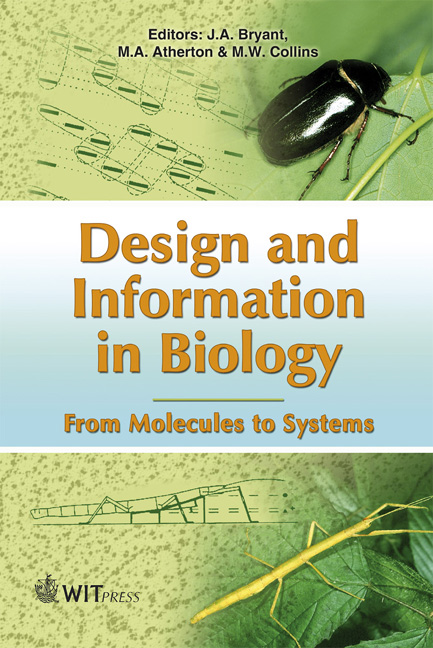Introduction: Part II – Genomes, Genes And Proteins
Price
Free (open access)
Volume
27
Pages
15
Published
2007
Size
847 kb
Paper DOI
10.2495/978-1-85312-853-0/02
Copyright
WIT Press
Author(s)
J. Bryant
Abstract
Chapter 2 Introduction: Part II – Genomes, genes and proteins J. Bryant School of Biosciences, University of Exeter, Exeter, UK. Abstract Changes in DNA provide the variation based on which natural selection works, but increases in the amounts of DNA have also been involved in the evolution of more complex organisms. However, many complex organisms possess much more DNA than is required for their genetic needs; the function of most of the excess DNA is not known. What is known is that in addition to carrying the genetic code, DNA contains within it signals involved in regulating its function. For replication (copying), DNA is organised into units called replicons which contain specific start points (origins). Copying genes into mRNAis regulated by promoters, specific sequences of DNA adjacent to genes. Many genes are active for most of the time but there are also many that, through regulatory mechanisms that operate on their promoters, are responsive to specific cues or signals. In eukaryotic organisms there are further complexities in mRNA synthesis: the initial transcript copied from the gene contains sequences that interrupt the coding sequence. These are known as introns and are removed so that the pieces (exons) of the coding sequence may be joined together. In some genes, there are alternative sites for this splicing process so that one gene may code for more than one protein. Further, there is evidence for movement of introns or exons between genes, generating more variety in evolution. The final product of most genes is a protein; the sequence of amino acids in a protein, coded by the nucleotide sequence in mRNA, determines its shape and hence its function. We cannot yet predict shape from sequence but we are beginning to understand the processes involved in the correct folding of proteins. Finally, amongst the variations in the basic genetic mechanisms, many, perhaps all, organisms can target specific mRNAs for destruction via the synthesis of inhibitory RNA molecules. 1 Introduction In the previous chapter it was shown that life on earth is centred round a ‘self-replicating’molecule called DNAwhich both carries the genetic information from generation to generation and makes
Keywords





